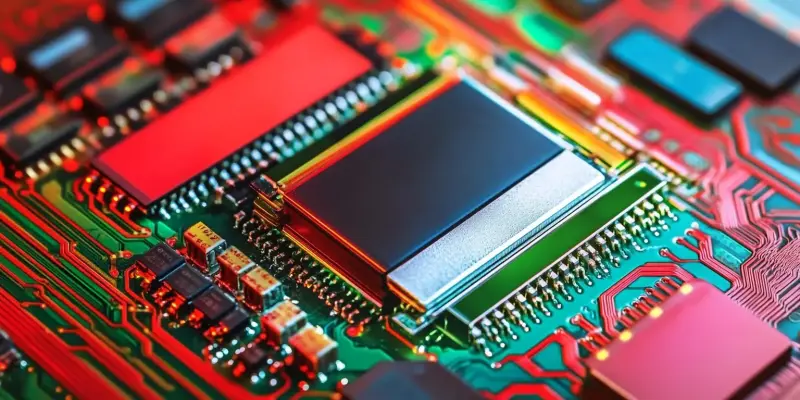The rapid growth of data creation has led to an escalating demand for scalable and cost-effective data storage solutions. As data centers strive to meet future demands, the role of data storage technologies becomes increasingly critical. Both Hard Disk Drives (HDDs) and Solid State Drives (SSDs) play a pivotal role in optimizing the total cost of ownership (TCO) for data centers. This article explores how the combined use of HDDs and SSDs can enhance data center efficiency and cost-effectiveness.
The Distinction Between HDDs and SSDs
Flash storage, characterized by high performance and low latency, is essential for high-demand data. SSDs provide quick access to frequently accessed data, such as popular internet videos, ensuring seamless user experiences. On the other hand, HDDs offer greater storage capacity at a lower cost, making them ideal for storing lower-demand data. This distinction highlights the importance of leveraging different storage technologies based on specific use cases and cost-benefit analyses. For instance, video streaming platforms may prioritize SSDs for delivering high-quality content swiftly, while archival data like old records can be economically stored on HDDs.
The varying demands of “hot” and “warm” data further illustrate the need for a balanced approach. Hot data, which requires rapid access, benefits from the speed of SSDs or even RAM. Conversely, warm data, which is accessed less frequently, can be economically stored on HDDs. This strategic allocation ensures that storage infrastructures remain both efficient and economical. Implementing a tiered storage system where SSDs handle real-time processing and HDDs manage long-term storage can result in substantial cost savings while maintaining performance. By analyzing data access patterns, organizations can optimize their storage investments, ensuring resources are used where they are most effective.
Factors Influencing Total Cost of Ownership
Several critical factors affect the TCO of data storage solutions, including capacity, power consumption, cooling, and storage density. Each of these elements plays a significant role in how data centers select and balance their storage options to optimize performance while minimizing expenses. By integrating HDDs and SSDs appropriately, data centers can maximize these elements to their advantage. For instance, higher capacity drives can reduce the need for additional racks, thereby saving physical space and operational costs. This optimization of space translates to lower real estate costs and enhanced infrastructure efficiency.
Power consumption and cooling are also crucial considerations. HDDs, due to their capacity, can store vast amounts of data at a lower cost compared to SSDs, contributing to space efficiency and reduced power and cooling requirements. This balance is essential for managing the escalating storage demands faced by data centers today. High-density HDDs help mitigate the complexity associated with power and cooling systems in large data environments. The more compact the storage, the easier it is to maintain temperature stability, ultimately enhancing equipment longevity and reliability. Consequently, adopting hybrid storage solutions aligns technological and economic benefits effectively.
The Growing Need for Computational Storage
The need for computational storage continues to grow, driven by advancements in AI and the increasing sophistication of AI systems. These systems generate immense volumes of data, necessitating efficient storage mechanisms. This trend provides significant momentum for HDD demand, as evidenced by Western Digital’s forecast of a 30% compound annual growth rate (CAGR) for HDD exabyte shipments from 2023 to 2027. The sheer volume of data generated by AI necessitates storage solutions that can handle extensive datasets efficiently and cost-effectively.
Nearly all data generated today makes its way to the cloud, driven by the scalability, flexibility, and advanced analytics capabilities that cloud infrastructure offers. Projections from IDC indicate that global data creation will swell from 132.4 Zettabytes (ZB) in 2023 to 393.9 ZB in 2028. Although not all of this data will be stored, a substantial 13.6 ZB is anticipated to be retained by 2028, underscoring the sustained relevance of HDDs amidst burgeoning data creation. Data centers consequently face the challenge of ensuring their storage infrastructures can accommodate this growth seamlessly.
Innovations in HDD Technology
Recent innovations have augmented HDD’s role as an efficient storage solution for expansive data environments. Advancements in conventional magnetic recording (CMR) and shingled magnetic recording (SMR) have enabled HDD capacities to expand significantly, with up to 26 terabytes for CMR drives and 32TB for SMR drives. These technological strides ensure that HDDs maintain their indispensability within data centers, providing high-capacity storage options with lower TCO. Enhanced recording technologies facilitate better data density, helping to escalate storage efficiency while maintaining manageable costs for data centers.
Addressing the challenges data centers face today, the need for efficient TCO management alongside escalating storage demands is paramount. Higher capacity drives, such as 32TB over 24TB HDDs, can significantly diminish the need for additional racks, reducing physical space and operational costs by 20-25%. This optimization of TCO is crucial for maintaining cost efficiency in data centers. By focusing on high-capacity HDDs, centers can optimize their spatial and operational budgets effortlessly. Consequently, regular upgrades to storage capacity become feasible without exponential increases in TCO.
Aligning with ESG Initiatives
With the rapid growth of data creation, there is an increasing need for scalable, cost-effective data storage solutions. Data centers are under pressure to meet future demands, making the role of data storage technologies ever more crucial. Hard Disk Drives (HDDs) and Solid State Drives (SSDs) are vital in optimizing the total cost of ownership (TCO) for these facilities. Data centers must efficiently manage their resources and investments, and the strategic use of both HDDs and SSDs can significantly contribute to achieving this efficiency. By leveraging the strengths of both types of storage, data centers can better address the unique needs of different data workloads, balance performance with capacity, and ensure long-term sustainability in the face of growing data demands. Thus, a combination of HDDs and SSDs offers a comprehensive approach to modern data storage challenges.

